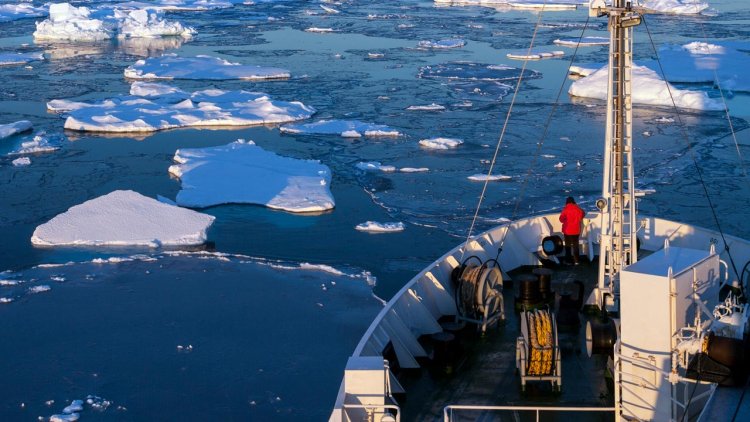Seaspan Shipyards to build Polar Icebreaker for Canadian Coast Guard
New ship construction program will sustain more than 2,800 jobs across Canada

As part of the National Shipbuilding Strategy (NSS), the Government of Canada has announced that Seaspan Shipyards (Seaspan) will design and build a Polar Icebreaker, the flagship of the Canadian Coast Guard’s icebreaking fleet.
The new ship construction program, which will sustain approximately 1,400 jobs at Seaspan’s Vancouver shipyard and 1,400 additional jobs in the marine industry across the country, is welcome and timely news for Seaspan employees and its cross-Canada supply chain. Work on the program is set to begin immediately upon the award of a contract.
With Canada’s current largest icebreaker, CCGS Louis S. St-Laurent, due to retire at the end of the decade after 60 years of service, there is an urgent need to begin work on the multi-year replacement program. The new icebreaker will be the largest ship in the Coast Guard fleet and will play a critical role in enabling the Canadian Coast Guard to patrol and protect 243,000 km of coastline – the longest national coastline in the world. Nearly 70% of that coastline is in the Arctic, a region of increasing interest from other countries and a growing national priority for Canada. The multi-mission ship will also provide vital resupply to Arctic communities, support Arctic science, help ensure the free flow of trade and safe commercial shipping, and conduct search and rescue and environmental response.
Seaspan is set to work with Canada’s marine industry leaders, including Genoa Design International in Newfoundland and Labrador and Heddle Shipyards in Ontario, along with hundreds of small and medium Canadian companies. Bringing to bear a cross-Canada approach, the Polar Icebreaker program is expected to grow Canadian businesses, tap into talent and capability across the country, and create and sustain good jobs.
In line with the economic and industrial development objectives of the NSS to build and strengthen Canada’s marine sector, a recent study has indicated that for every dollar spent on the NSS at Seaspan, a dollar is added to Canada’s GDP.
The icebreaker, Seaspan’s fourth class of NSS vessel, will be constructed at the company’s Vancouver shipyard, a high-capacity multi-program yard that is one of the most modern and efficient in North America and was purpose-built to deliver Canada’s largest and most complex ships. The Polar Icebreaker will be built concurrently with the second Joint Support Ship for the Royal Canadian Navy, the largest naval vessel by length ever to be built in Canada, and the largest and most advanced ocean science research ship for the Canadian Coast Guard.
The Honourable Bernadette Jordan, Minister of Fisheries, Oceans and the Canadian Coast Guard, said:
“The new Polar icebreakers will be a game-changer for Canada’s marine industry–both in their construction and the difference that a stronger presence in the Arctic will make. Built by Canadian shipyards, these vessels will enable the coast guard to conduct critical science, supply and other missions in our Arctic region year-round. Under the National Ship Building Strategy, we’re putting thousands of Canadians to work building a fleet that will serve those communities for decades.”
Quick facts
- Canada’s Coast Guard currently has 18 icebreakers of varying sizes and capability, which is the second largest icebreaking fleet in the world. The largest is the CCGS Louis S. St-Laurent, which will continue to operate through the next decade.
- In 2019, the Government of Canada announced an investment for the renewal of the Canadian Coast Guard fleet with funding of $15.7 billion for up to 18 new large ships, additional funding for up to six Program icebreakers, as well as investments of over $2 billion in vessel life extension, refit, and maintenance work for the existing fleet.
- To date, three Offshore Fisheries Science Vessels (OFSV) and 18 small vessels have been delivered to the Canadian Coast Guard under the National Shipbuilding Strategy along with two refitted Medium interim icebreakers.



























